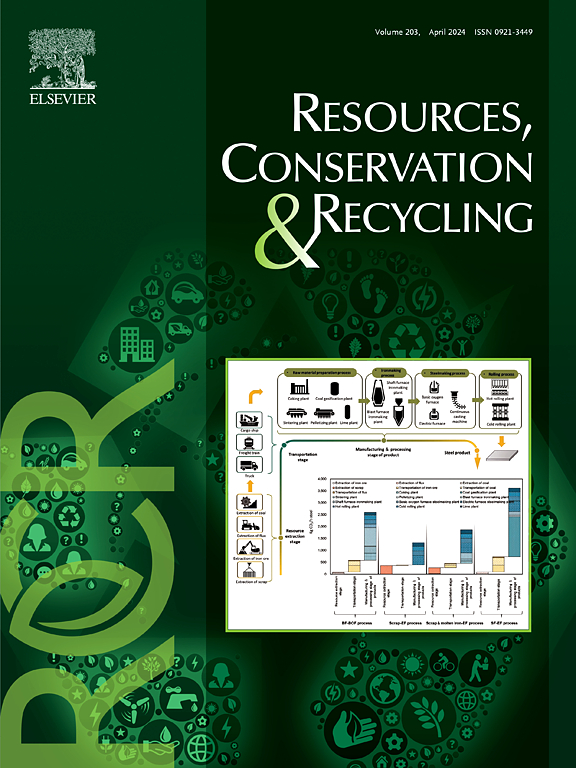Increasing plastic circularity in the automotive sector: Supply chain analysis and policy options from the European Union (EU)
IF 10.9
1区 环境科学与生态学
Q1 ENGINEERING, ENVIRONMENTAL
引用次数: 0
Abstract
This study investigates plastic circularity in the EU automotive sector. It focuses on the drivers and barriers to recycling, informing the definition of policy options underlying the new End-of-Life Vehicles Regulation proposed by the European Commission in 2023. The analysis combines secondary data from scientific and grey literature, with primary data from industry stakeholders. Results include a supply chain map outlining stakeholders, industrial processes, and material flows, complemented by a list of 15 barriers and 8 drivers for increasing recycled plastic content in new vehicles. This study demonstrates how a supply chain perspective can effectively provide both systemic and granular insight about circular economy dynamics (i.e., big picture, high detail). Integrating these two levels of insight is crucial for advancing circular economy research and enhancing its ability to inform evidence-based policies for the sustainability transition.

增加汽车行业的塑料循环:来自欧盟的供应链分析和政策选择
本研究调查了欧盟汽车行业的塑料循环。它侧重于回收的驱动因素和障碍,为欧盟委员会在2023年提出的新报废车辆法规的政策选择提供信息。该分析结合了来自科学文献和灰色文献的二手数据,以及来自行业利益相关者的原始数据。研究结果包括一张供应链图,概述了利益相关者、工业流程和物料流,并列出了增加新车再生塑料含量的15个障碍和8个驱动因素。本研究展示了供应链视角如何有效地提供关于循环经济动态的系统和细粒度洞察(即,大局观,高细节)。整合这两个层面的洞察力对于推进循环经济研究和增强其为可持续性转型提供循证政策信息的能力至关重要。
本文章由计算机程序翻译,如有差异,请以英文原文为准。
求助全文
约1分钟内获得全文
求助全文
来源期刊

Resources Conservation and Recycling
环境科学-工程:环境
CiteScore
22.90
自引率
6.10%
发文量
625
审稿时长
23 days
期刊介绍:
The journal Resources, Conservation & Recycling welcomes contributions from research, which consider sustainable management and conservation of resources. The journal prioritizes understanding the transformation processes crucial for transitioning toward more sustainable production and consumption systems. It highlights technological, economic, institutional, and policy aspects related to specific resource management practices such as conservation, recycling, and resource substitution, as well as broader strategies like improving resource productivity and restructuring production and consumption patterns.
Contributions may address regional, national, or international scales and can range from individual resources or technologies to entire sectors or systems. Authors are encouraged to explore scientific and methodological issues alongside practical, environmental, and economic implications. However, manuscripts focusing solely on laboratory experiments without discussing their broader implications will not be considered for publication in the journal.
 求助内容:
求助内容: 应助结果提醒方式:
应助结果提醒方式:


